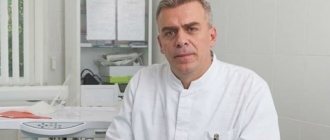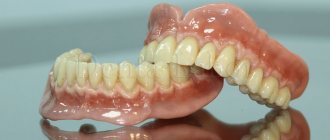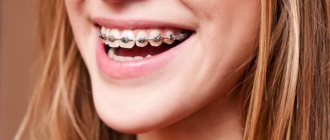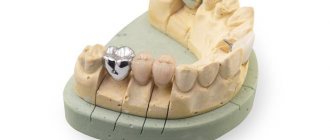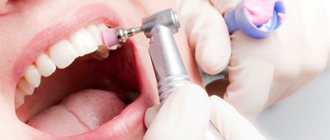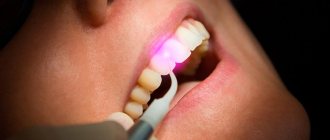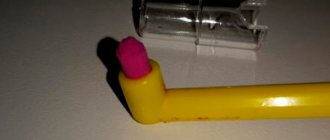Before starting orthodontic treatment, many people wonder: how to brush your teeth when they have braces installed, and how difficult is it?
Indeed, there are special requirements for personal hygiene during orthodontic treatment. If you brush your teeth unfairly (both with and without braces), there is a risk:
- the appearance of white spots on tooth enamel
- darkening of the enamel
- enamel destruction
- caries development
- development of gum disease
- the appearance of bad breath.
To avoid the development of negative phenomena, it is necessary to follow the recommendations of dentists and thoroughly brush your teeth and braces. Let's understand the basic oral hygiene products.
Dental floss
Dental floss (floss) is needed to thoroughly clean the contact surfaces of the teeth, that is, those with which the teeth touch each other, from plaque. The area of this surface is quite large - up to 8 mm2, and the bristles of a toothbrush cannot clean it all. Therefore, hidden caries most often occurs there, which is difficult to detect even for a dentist.
For orthodontic patients, a special dental floss (superfloss) is produced. It differs from ordinary thread in that it has different thicknesses. The thicker part of the floss is used for gaps between teeth that may appear while wearing braces. The thinner part is for dense teeth. Superfloss also has a compacted flexible tip (like a lace), thanks to which you can quickly thread the thread through the arch of the braces system.
The thread must be used at least once a day, for example, in the evening before bed. You can do this both before brushing, so that you can then remove as much plaque as possible with a toothbrush, and after brushing. In the second case, do not forget to rinse your mouth after flossing.
If your gums bleed while flossing, this may be a sign of inflammation. In this case, you need to contact a gum treatment specialist - a periodontist.
Diet rules while wearing braces
For effective treatment, you need to adjust your diet.
- Avoid solid foods - tough meats, nuts, raw vegetables and fruits, crackers and other foods that can damage the braces.
- Avoid sweet and sticky foods - chocolate, marmalade, marshmallows, nougat, and chewing gum can stick to your braces. Cleaning the system from such products is a difficult and dangerous task; the locks can be damaged or become unstuck. In addition, large amounts of sugar provoke the growth of bacteria in the oral cavity.
- Avoid foods with dyes—wine, soda, strong tea, or colorful candies can tint your braces an undesirable shade.
- Too cold and hot dishes are prohibited - temperature changes can cause braces to come off.
Regular toothbrush
A regular brush, which is sold in any store, removes plaque on the outside and inside of the teeth.
Moving the brush in a circular or up-and-down motion can push plaque under the gum and cause inflammation.
If you brush your teeth with horizontal movements to the right and left, the interdental spaces are poorly cleaned and there is a high probability that the gingival surfaces of the teeth will remain uncleaned. The result is inflammation of the interdental papillae and caries on the contact surfaces of the teeth.
How to brush your teeth correctly? It is necessary to hold the brush horizontally and, using sweeping movements from the gums to the cutting edge, clean off plaque from the outside of the dentition of both jaws. Then, placing the brush vertically, brush the inside of the teeth, also from the gums to the cutting edge. Then brush the chewing surfaces of your teeth as usual. At least 10 cleaning movements should be performed on each surface of each tooth.
Ultrasound and whitening
There are alternative methods of cleaning the oral cavity, for example, using ultrasound. Unfortunately, this technology has contraindications. Dental treatment is rarely carried out under local anesthesia, since the patient does not experience any unpleasant sensations during the process.
Thanks to the smallest vibrations, plaque leaves the enamel in a matter of seconds, resulting in it remaining smooth and shiny for a long time. However, ultrasound can only be applied to gum pockets and interdental spaces; the areas around the clasps cannot be treated. This is argued by the fact that the glue on which they are fixed may soften and cease to hold the structure properly.
You cannot whiten your teeth during treatment with braces due to the aggressive effects of the whitening solution used. It can change the shade of the enamel, but it cannot penetrate under the base of the staple, so the color will be uneven. Whitening should be postponed until the braces are removed. Careful care and regular cleaning of teeth during orthodontic treatment is the key to obtaining the desired result without complications and in the shortest possible time.
previous post
What's the difference between sapphire and ceramic braces?
next entry
Professional hygiene in the dentist's office
The hygienist, using professional Air-Flow products and an ultrasonic nozzle, will completely clean the teeth of plaque and stones (if they appear), perform deep fluoridation of the teeth to strengthen the enamel and conduct a preventive examination for the occurrence of caries or gum inflammation.
It is necessary to visit a hygienist at least once every six months, but more often. Orthodontists recommend undergoing professional hygiene and examination once every 3-4 months. If your attending orthodontist notices that you clean plaque well enough on your own, he will recommend having professional hygiene done once every 6 months.
Rules for caring for braces
In addition to hygiene procedures and nutrition, it is important to follow some other rules.
- Inspect the structure daily - lightly, barely touching, press on the bracket lock and move it a little; if you notice movement, consult a doctor immediately. One loose element can affect the movement of teeth as planned and ruin the final result.
- Do not violate your orthodontist appointment schedule; come for checkups regularly. The doctor monitors the dynamics of changes, compares them with the plan and corrects the arch; a missed appointment can disrupt the course of treatment.
- Add vitamin C, calcium and magnesium to your diet to strengthen teeth and enamel. Your teeth are under pressure, moving them to a different position affects the strength of the root and enamel. Cottage cheese, cereals, herbs and citrus fruits will help keep your teeth healthy until the end of treatment.
- Do not try to clean the system with foreign objects! For cleaning, carry dental floss and a brush with you; do not try to pull out stuck pieces of food with your fingernail, toothpick, needle, edge of a napkin or other things - you can damage your braces.
- Contact your orthodontist if the system puts too much pressure on your teeth and you cannot cope with the discomfort. The doctor will prescribe a special wax that will reduce friction.
The number of rules can cause fear, bewilderment and rejection, but do not be afraid. The recommendations are not at all complicated: as soon as you start following them, these rules will become part of your daily rituals and become a habit. Although wearing braces is a long process, it usually does not exceed two years. And the result of bite correction will remain with you forever. For the sake of a beautiful and even smile, it is worth trying and following the recommendations, and our section will help you with choosing special products for cleaning braces.
Irrigator
An irrigator is an excellent additional hygiene product that effectively cleans teeth, spaces between teeth and gums with a powerful pressure of a thin stream of water. When cleaning with an irrigator, the gums are massaged, which ensures good blood circulation and the prevention of bleeding and gum disease. For orthodontic cleaning you will need a special attachment, but you can continue to use the irrigator with a standard attachment even after the end of orthodontic treatment.
An irrigator is not a replacement for a toothbrush!
Rinse aid
Most rinses are used to eliminate unpleasant odors. It is important to understand: with high-quality cleaning of teeth with brushes, removing plaque and food debris, there should be no smell!
If you are sure that you are brushing your teeth correctly, and your dentist has confirmed that there is no plaque or inflammation of the gums, but the smell remains, you need to consult an ENT specialist and a gastroenterologist, because The cause of the smell may be hidden in diseases of the ear, throat, nose and gastrointestinal tract.
If you do decide to use a mouthwash, make sure that it does not contain chlorhexidine (this substance can give teeth a gray tint) and alcohol (it can irritate and dry out the mucous membranes).
Cleaning in a dental clinic
Various hygienic procedures at home are not a substitute for brushing teeth with braces installed at the dentist. It is recommended to perform this procedure once a month.
A professional dental cleaning removes bacteria, prevents the formation of dark plaque, and thoroughly removes food debris from the braces area.
There are different cleaning options in dental clinics:
- laser;
- special solution or substance;
- ultrasound.
After the procedure, a protective coating can be applied to the teeth, which will also saturate the teeth with fluoride.
Choosing a toothpaste
The modern variety of toothpastes is great, and their advantages are varied, so it is impossible to determine the best one. In addition, the need for one or another effect of using toothpaste is very individual. There are toothpastes aimed at reducing tooth sensitivity, preventing gum disease, “strengthening” enamel, whitening, and so on.
It’s not so important what you brush your teeth with, the most important thing is to do it correctly.
The choice of toothpaste is yours, or you can consult with your orthodontist and hygienist. The doctor may also recommend a special gel for remineralizing tooth enamel.
It is not necessary to use a lot of paste; usually it is enough to squeeze out a pea-sized amount of paste onto the brush.
Don't forget to drink water
Pure water quenches thirst well, refreshes the oral cavity and does not contribute to the appearance of plaque, unlike tea and coffee. If the mucous membrane of the lips is sufficiently moisturized, it is not susceptible to drying out (especially in winter, when indoor air is dry), which means there is less risk that the orthodontic system will cause irritation.
All these rules are simple, and you get used to them within the first few days after starting treatment. Once adapted, they are easy to follow and do not interfere with your active life. In addition, the habit of brushing your teeth thoroughly remains, as a rule, for life, which also contributes to maintaining health.
More articles:
- Back to the orthodontist? All about re-treatment
- What hurts more: braces or aligners?
How long and how often should you brush your teeth?
Regardless of the choice of toothpaste, the main thing is to brush your teeth well and regularly. Complete cleaning of teeth and braces with floss and brushes takes an average of 15-20 minutes. Cleaning with all brushes must be done at least twice a day - in the morning and in the evening before bed (once using superfloss). During the day, it is enough to have one (regular) toothbrush, brushes and toothpaste in your bag and brush your teeth after eating. This will help keep you clean throughout the day and remove food debris.
Hygiene during orthodontic treatment is actually not as complicated as it seems at first glance. During the installation of braces, the orthodontist will tell you in detail how to properly perform hygiene, and will also show you on a model. Additionally, you can ask your doctor to give you a hygiene lesson.
Brushing your teeth and braces may be difficult at first, but after 1-2 weeks you will get the hang of it and the process will not cause any difficulties.
Devices for cleaning bracket systems
Braces are available from different materials. These are metal, ceramics, medical sapphires. Each system has hard-to-reach places, as well as elements that require careful handling. Rough cleaning of the structure will damage the braces and even the enamel, so it is important to follow the advice of orthodontists and use the recommended devices. Among them:
- Ortho brush.
- Mono-beam (single-beam) brush.
- Interdental dental brush.
- Superfloss, floss, threads for cleaning teeth.
- Irrigator.
In addition to toothbrushes you will need:
- Toothpaste – regular or orthodontic.
- Foams for cleaning braces.
- Mouthwash – for gums and teeth.
- Solution for irrigator – with antibacterial effect.
Additionally, orthodontists include wax in the kit for patients. Its task is to protect the oral mucosa from injury by hard and protruding segments of the brace system.
V-shaped orthodontic brush
The ortho brush differs from the classic height of the bristles - elongated around the perimeter and short in the middle. This arrangement improves the quality of teeth cleaning. With horizontal movements of the orthobrush along the jaw line, the central rows of bristles clean the clasps and arch, and the bristles along the edges clean the interdental space and open areas of the teeth.
There are several things to consider when choosing an orthodontic brush. The product must have:
- soft pile;
- good thickness;
- head sizes up to 3 cm.
Compactness guarantees maneuverability and access to all teeth, and the soft bristles do not harm the enamel of the orthodontic structure.
Mono-beam brush
The single-tuft brush is designed for targeted cleaning of hard-to-reach areas. The product has a curved L-shaped handle and a small tuft of bristles at the end. The beam is made in such a way that when cleaning it completely covers the neck of the tooth.
Rodikova Tatyana
It is better to take mono-tuft brushes with soft bristles. And you don’t need to be afraid that they don’t clean well. At the appointment, I teach how to use this tool correctly, so the quality of care for my patients is always excellent.
Can I clean my braces with a regular or electric toothbrush?
A classic toothbrush is prohibited while wearing braces. You can clean it, but it will not do any good. Removal of dirt will be superficial, and hard-to-reach areas will remain uncleaned.
As for electric models, they can be used, but with reservations. Rotary and sonic electric brushes with soft bristles or orthodontic attachments are permitted. Ultrasonic options cannot be used, since the aggressive influence of ultrasound negatively affects the structure of the adhesive composition and can easily cause damage to the corrective structure.
You can return to using electric toothbrushes after removing your braces.
Orthodontic interdental brushes
Brushes are small brushes with short bristles. There are three product options in orthodontics:
- cylindrical - uniform height of bristles arranged in a spiral relative to the axis of the structure;
- cone-shaped - short villi at the top and elongated at the base of the brush;
- curved - the working part is located at an angle to the handle.
Angled and cone-shaped brushes clean best, but cylindrical ones are also allowed. The device perfectly removes plaque around the braces, under the arches and between the teeth.
The bristles of the brush and the areas between them quickly become dirty, so you should change the brushes every two weeks.
Dental floss for cleaning braces - floss or super-floss
For thorough cleaning of the brace system, doctors recommend superfloss. This dental floss has rigid ends, which makes it easier to pull under the archwire, and has a complex structure that guarantees high-quality cleaning. The second option is waxed floss for cleaning teeth, which glides and does not cling to braces. Otherwise, dental floss is selected as usual - according to manufacturer and thickness.
Plaksina Margarita
I recommend super floss to my patients. This is a fixed size thread with a hard tip. Moreover, it has variable thickness and areas with a spongy structure, which allows it to literally absorb plaque and clean tooth enamel well.
Oral irrigator
An irrigator is a device that cleans teeth with a narrow directed jet released under a certain pressure. When choosing a model, you should pay attention to:
- Type – compact with batteries and a compartment for water or bulky stationary with mains power.
- Pressure – permissible adjustment in the range of 0.7-4.8 bar.
- Modes – types and quantities.
- Variety of attachments.
- Compact size.
Irrigators perfectly clean interdental areas and hard-to-reach areas of orthodontic structures, but do not replace toothbrushes. This is a helper tool.
Toothpastes – orthodontic and plain
Orthodontists give the following recommendations regarding toothpastes:
- During the first weeks after installing braces, avoid products containing high amounts of calcium and fluoride.
- After the enamel gets used to the presence of the corrective structure, give preference to fluoride-containing pastes.
- Buy enzyme-containing formulations to quickly break down food debris and reduce the rate of appearance of pathogenic microflora during the day.
It is also allowed to use familiar toothpastes - the choice is up to the patient.
Foams and gels - quick cleaning of braces
Dental foams and gels can create additional antibacterial protection and quickly remove plaque from teeth. The products have a thick, dense consistency and are well applied to orthodontic structures. These are excellent preventative agents for preventing the formation of caries and tartar.
Foams and gels are a solution for quick hygiene. For use on the road, at work, at school, on a trip - when you don’t have a toothbrush with you.
Dolotova Marina
Many patients are surprised that there are such wonderful foams. They are really comfortable. The consistency is like a gel. They clean perfectly and have an excellent antibacterial effect. Especially indicated for children who cannot brush their teeth after school breakfasts and lunches.
Mouth rinses
Rinsing your mouth after eating and brushing your teeth is a necessity. Especially if it is not possible to carry out proper care and brush your teeth. Special means act comprehensively:
- freshen breath;
- destroy pathogenic microflora in the oral cavity;
- protect against caries;
- reduce the risk of inflammation.
